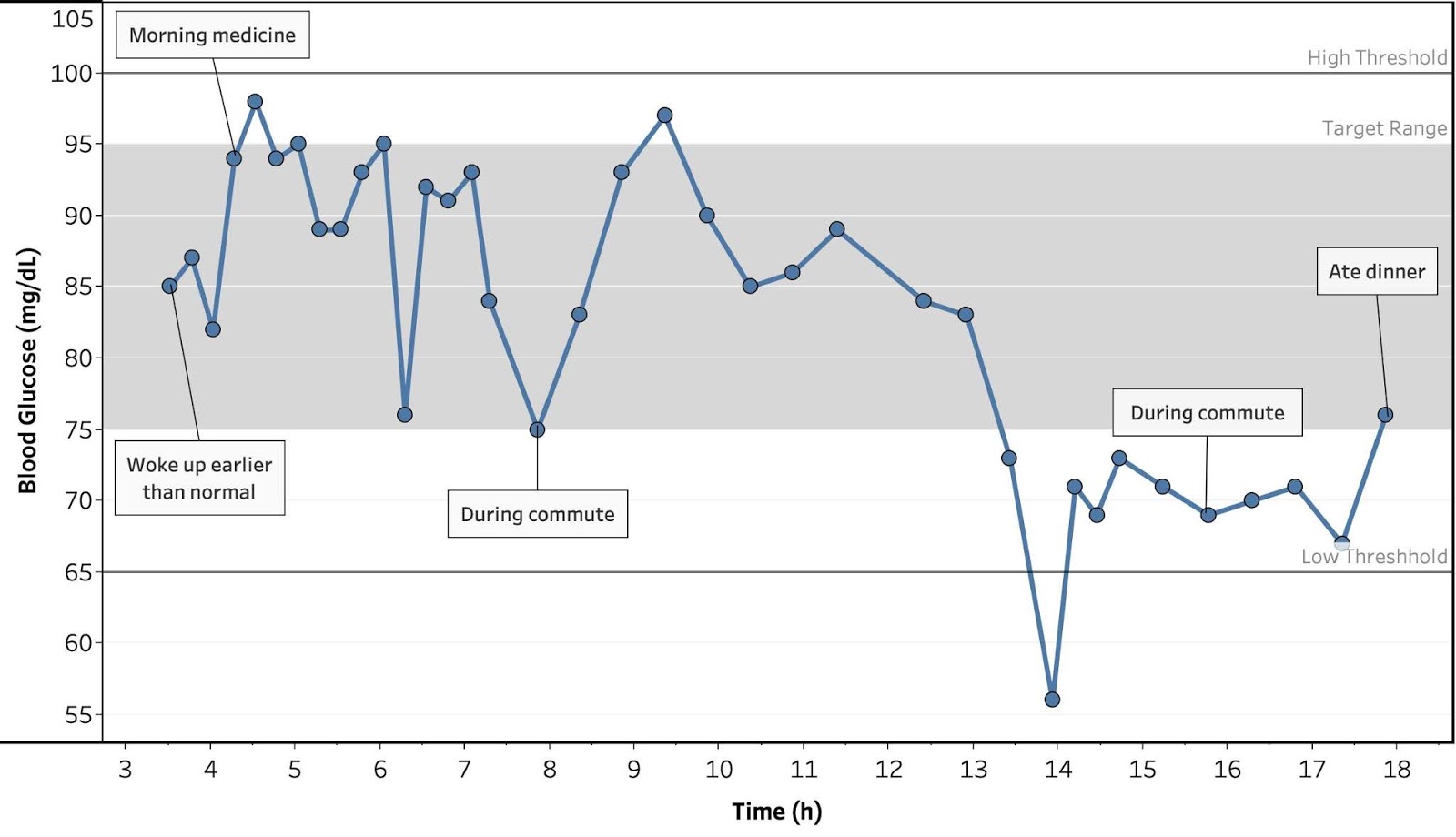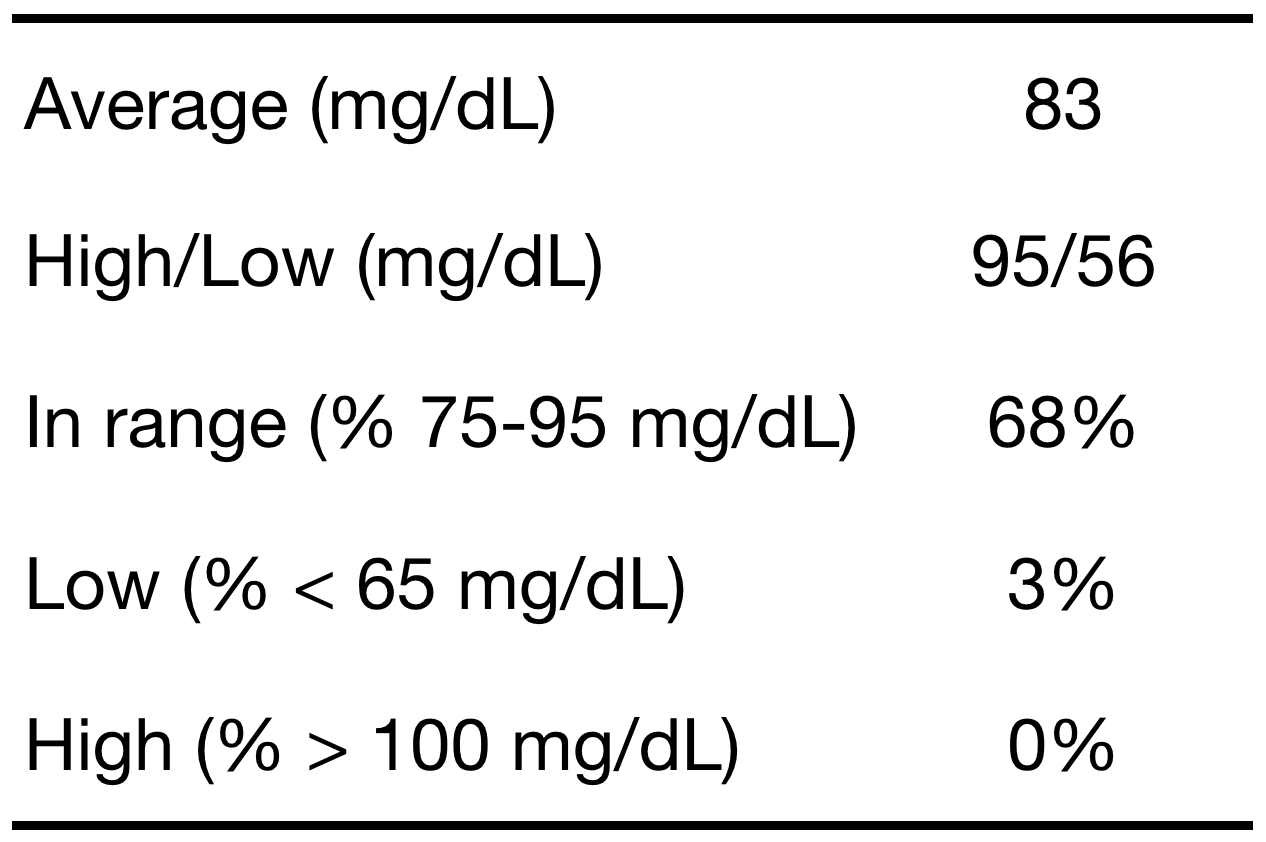Get new posts by email or rss feed


I tried again this week to measure the effect of different food ingredients on my blood sugar. I started with plain glucose, but quickly ran into a problem. The first two times I ate 3g of glucose, which normally would raise my blood sugar ~15 mg/dL, my blood sugar actually dropped. I did these experiments at 2pm, 8.5 h after eat breakfast, so I shouldn’t have had any effects from either the food or medication.
Based on these results, I’m not going to be able to get clean measurements of the effect of food unless I better understand my baseline blood glucose, so I decided to monitor my blood sugar during a day of fasting.
As with my two-day tracking experiment a couple weeks ago, this was quite informative. Here’s a most important things I learned, my new questions, and ideas for next experiments:
Key Learnings:
Full data and summary statistics in Figure 1 and Table 1
- Checking blood sugar during a fast is a useful control experiment and helps determine if the phenomena I’m observing are due to specific interventions vs. natural or time of day-based variation.
- Even with my morning insulin, I’m seeing an ~10 mg/dL increase that persists for ~5 h. I should try increasing the dose by ~0.25u.
- There’s a measurable drop in my BG when I’m driving to/from work. I saw this in 3/4 of the drives during my previous glucose tracking experiment, but I didn’t pick up on it because my commutes occur right before mealtimes. Need to investigate further to see if this is real & consistent.
- I saw an ~15 mg/dL drop starting at 1p that persisted until 5:30p.
- This is the time period when I was trying to do the food effect tests and may be why I was seeing the weird drop in BG.
- This occurred 9 hours after my last dose of insulin (0.5u each of Novolog and Tresiba), so must be the result of something my body is doing. Is this drop from fasting (e.g. running out of glycogen) or something that occurs normally?
- My BG stabilized at 65-75 mg/dL, which indicates that that range is something that can occur naturally and not due to medication. Given this, should I correct lows in this range or let them be?
- I always get tired around 2-3p, lasting until about 5-6p. I’ve always chalked this up to the end of the work day and then getting re-energized by dinner/being home, but maybe there’s more going on. Need to test interventions to eliminate this afternoon fatigue.
Questions:
- How consistent are the effects I observed? Which are due to fasting vs. effects that occur during a normal day?
- Is the driving effect real? If so, are there ways to mitigate it? Even if it’s only a short-term effect, it could be causing fatigue or other reduced mental capacity while driving.
- How can I mitigate the 10 mg/dL increase in the morning?
- Is the afternoon drop connected with feeling tired and less mentally capable? If so, how can I mitigate the effect?
Next Experiments:
I’m always interested in ideas for new experiments, so please leave a comment if there’s something you’d like me to try.
- Repeat this fasting experiment a couple more times to see if the observations are reproducible.
- Also try fasting for shorter durations (single meals) to check if effects are from the duration of the fast vs. ones that would occur normally.
- Measure fatigue and/or mental acuity see how it correlates with time of day and BG.
- Test an increase in morning insulin to reduce the effect of the dawn phenomenon.
Details
Purpose
To better understand trends in my blood glucose over the course of a day fasting and determine if there are trends or events that I should investigate further.
Design/Methods
General. Blood glucose was measured approximately every 15 min. using a FreeStyle Freedom Lite glucose meter and FreeStyle lancets & test strips. No special precautions were taken to clean the lancing site before measurement. To take a sample, the lancing devices was used to pierce the skin at an ~45 deg. angle from the finger. Blood was then squeezed out by running the thumb and pointer finger of the opposite hand from the first knuckle to the lancing site of the finger. Blood was then wicked into a test strip that had been inserted into the meter and the glucose reading was recorded.
For medication, I took my normal morning and evening medication, but did not dose for meals.
Data
Results & Discussion
See key learnings & questions above.
Conclusion & Next Experiments
See summary above.
– QD